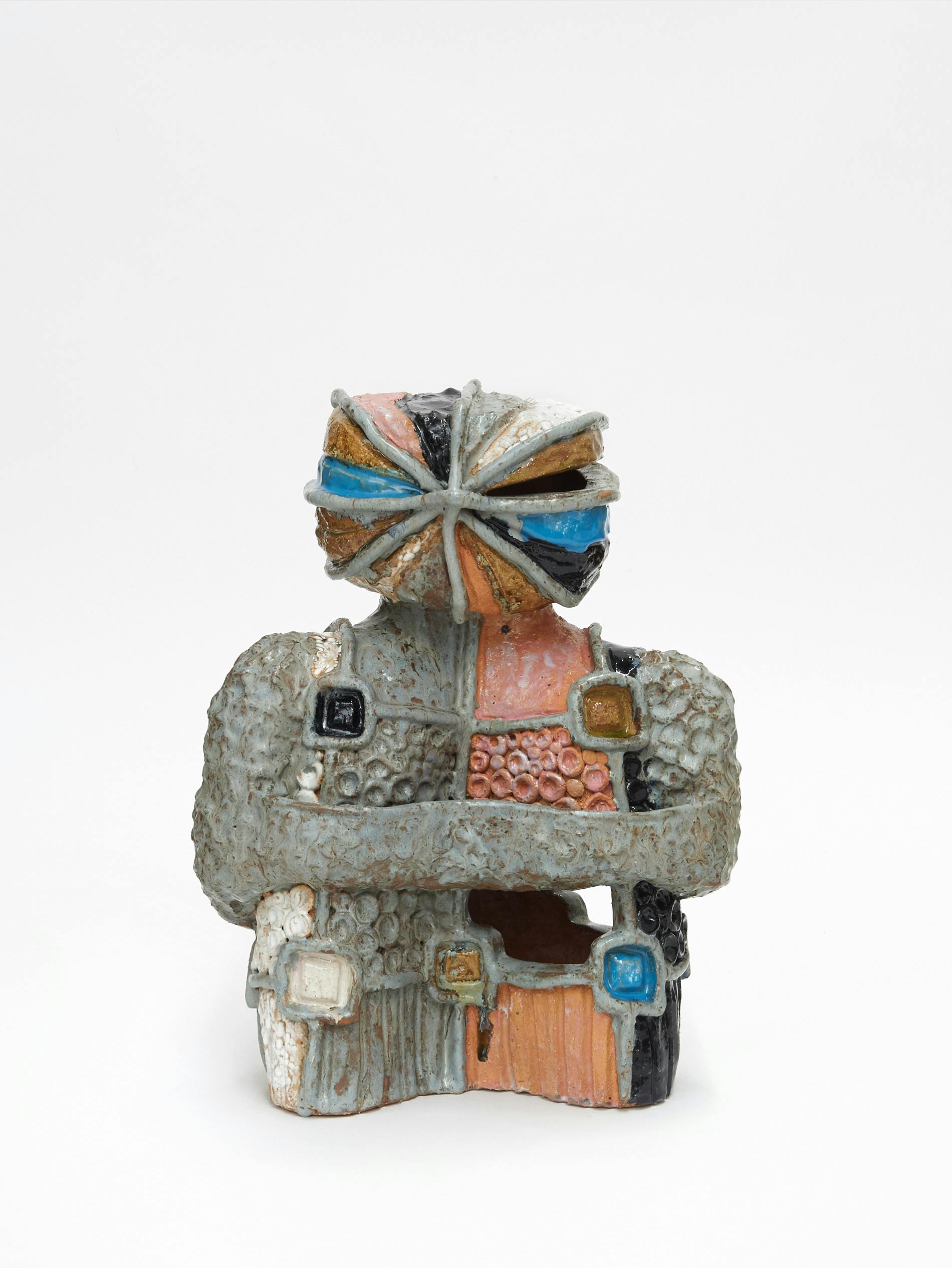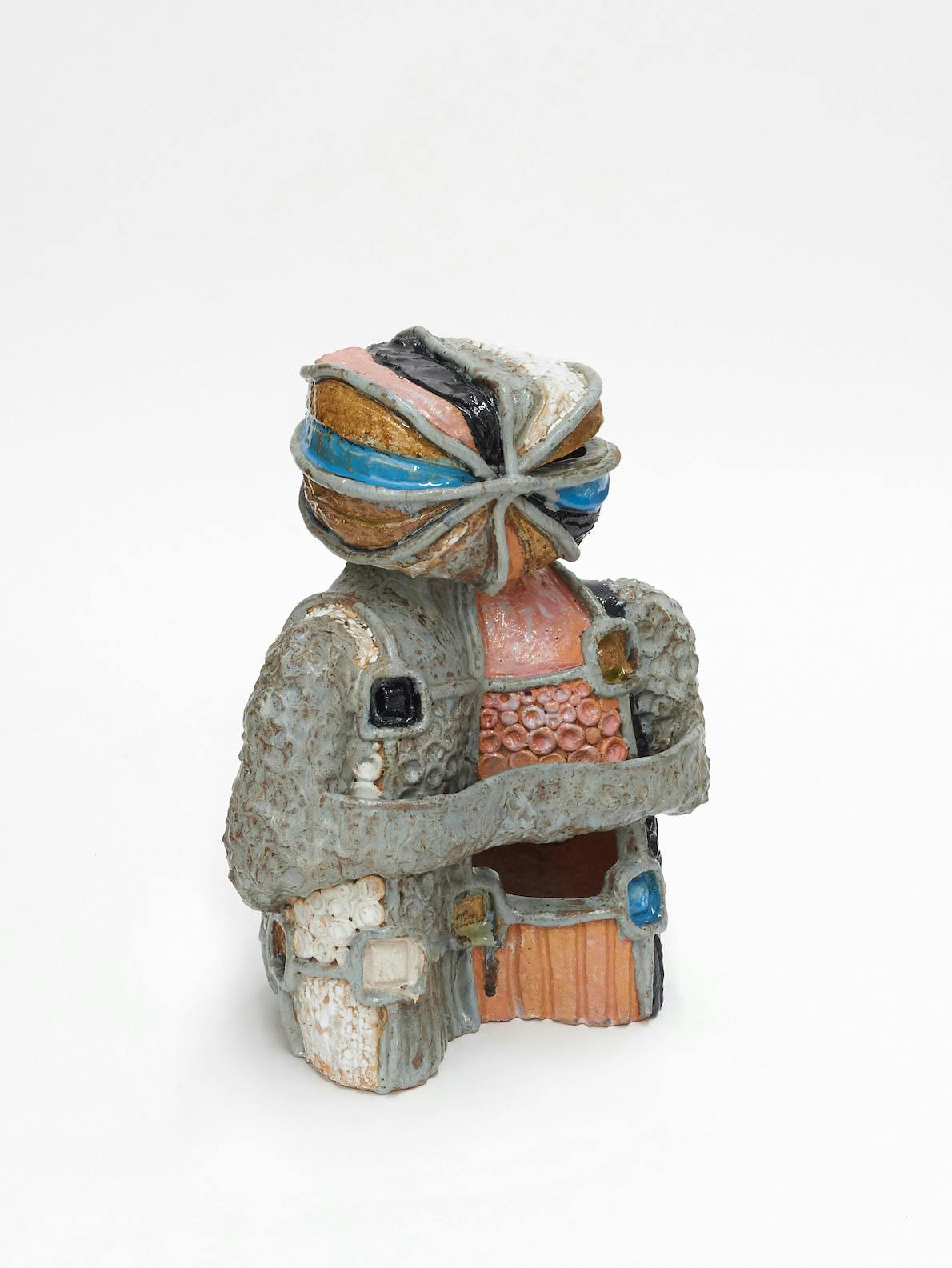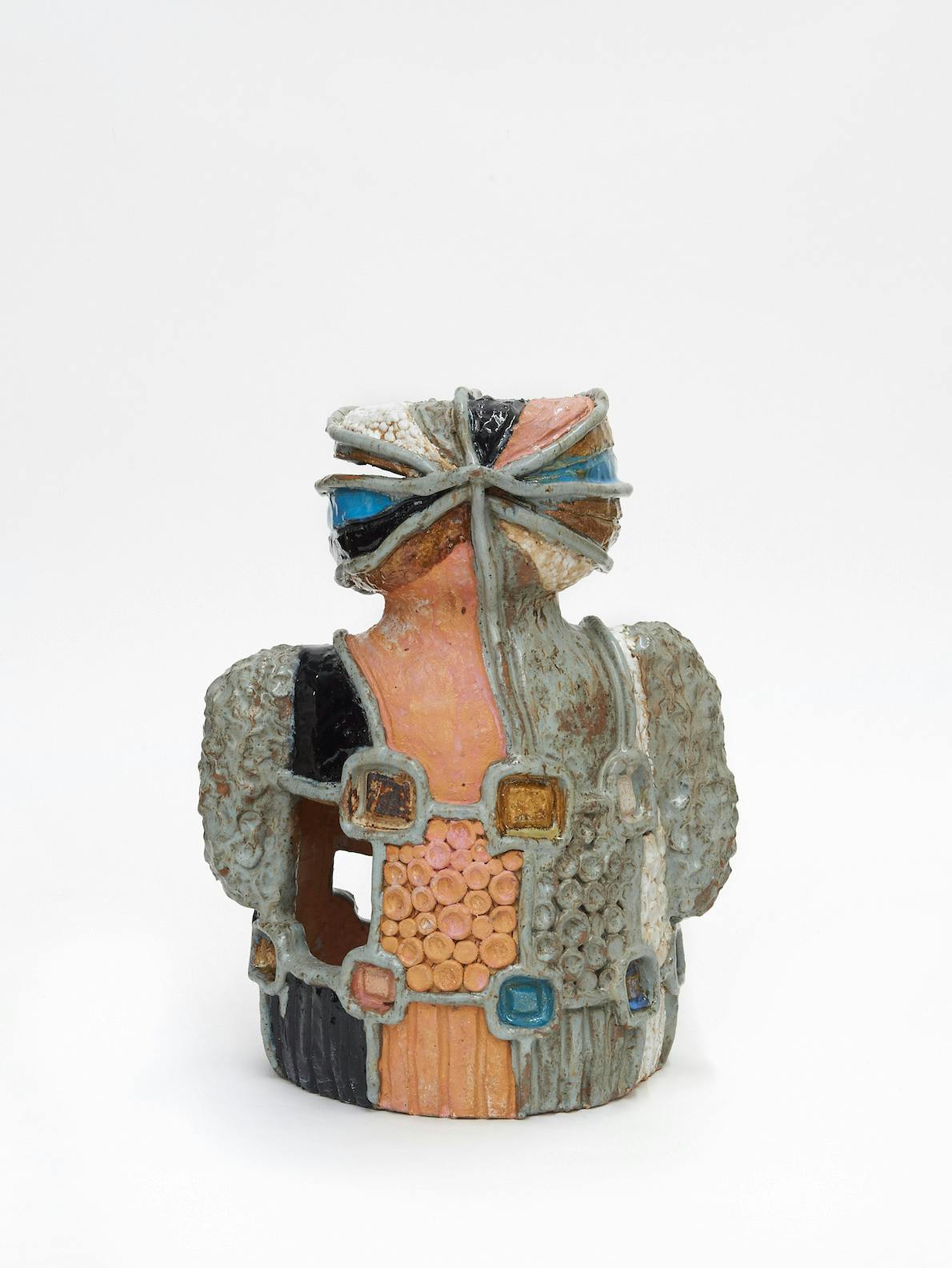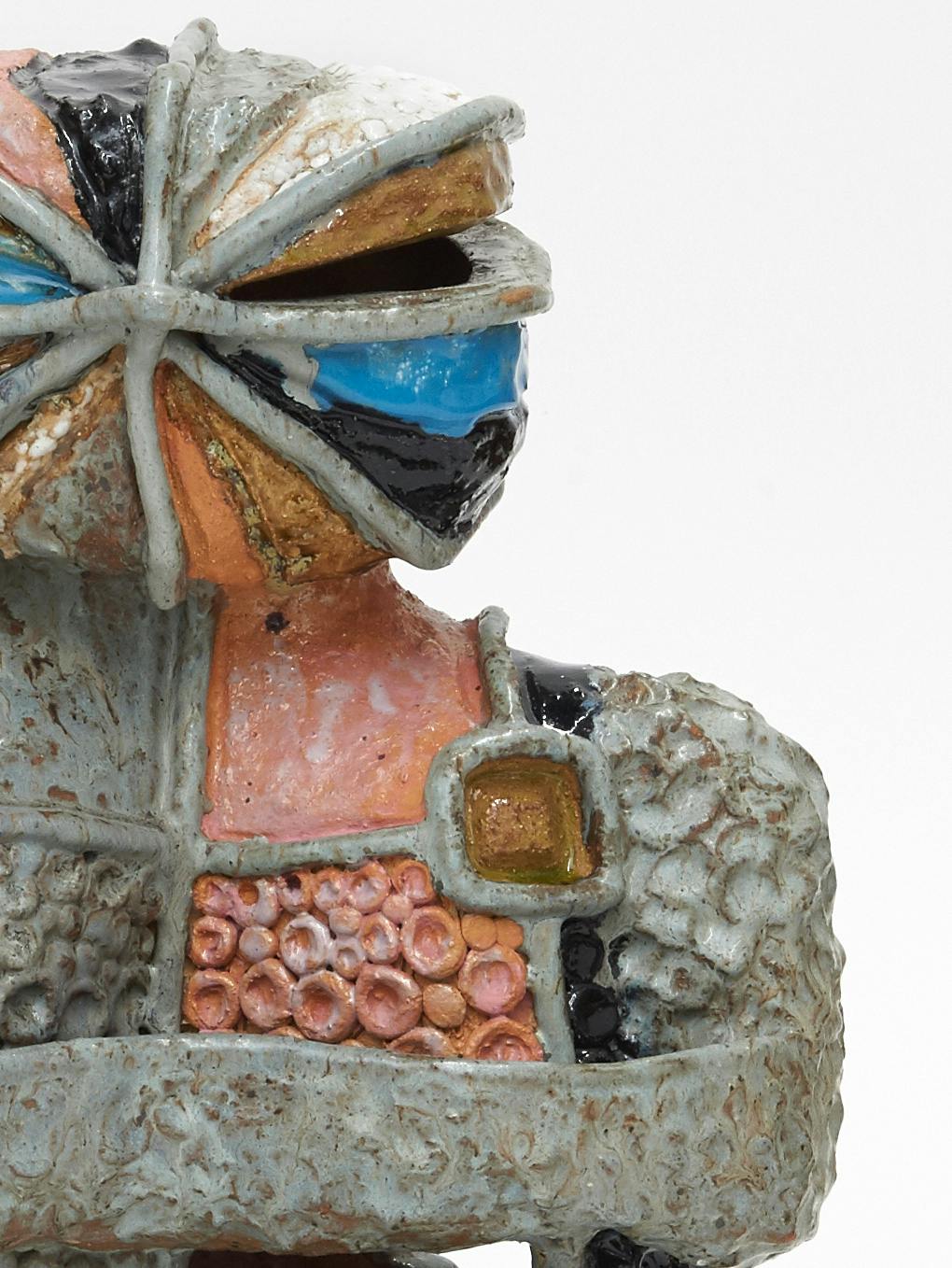Aster Bust 6
Elisa Soliven
- Glazed ceramic
- 2023
- 18" x 15" x 9"
"What started out as portraits is no longer literal, but rather a reduction to what could still be considered a bust: a representation of the upper part of the human figure, head, chest, and shoulders. I call this series ‘Aster Busts’ since they have a star formation for the face and also depict the neck, chest and shoulders. Folded arms become a container for various sculptural elements, such as a cast porcelain object."
- Elisa Soliven
Building a contemporary art collection is a lifelong journey that is made more accessible with Testudo. Whether you are just learning about art collecting or have already started your collection, we invite you to talk with us!
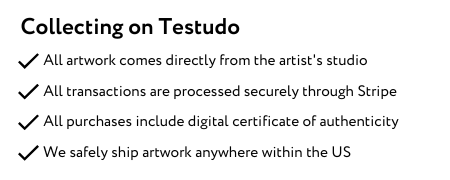
Please login to purchase.
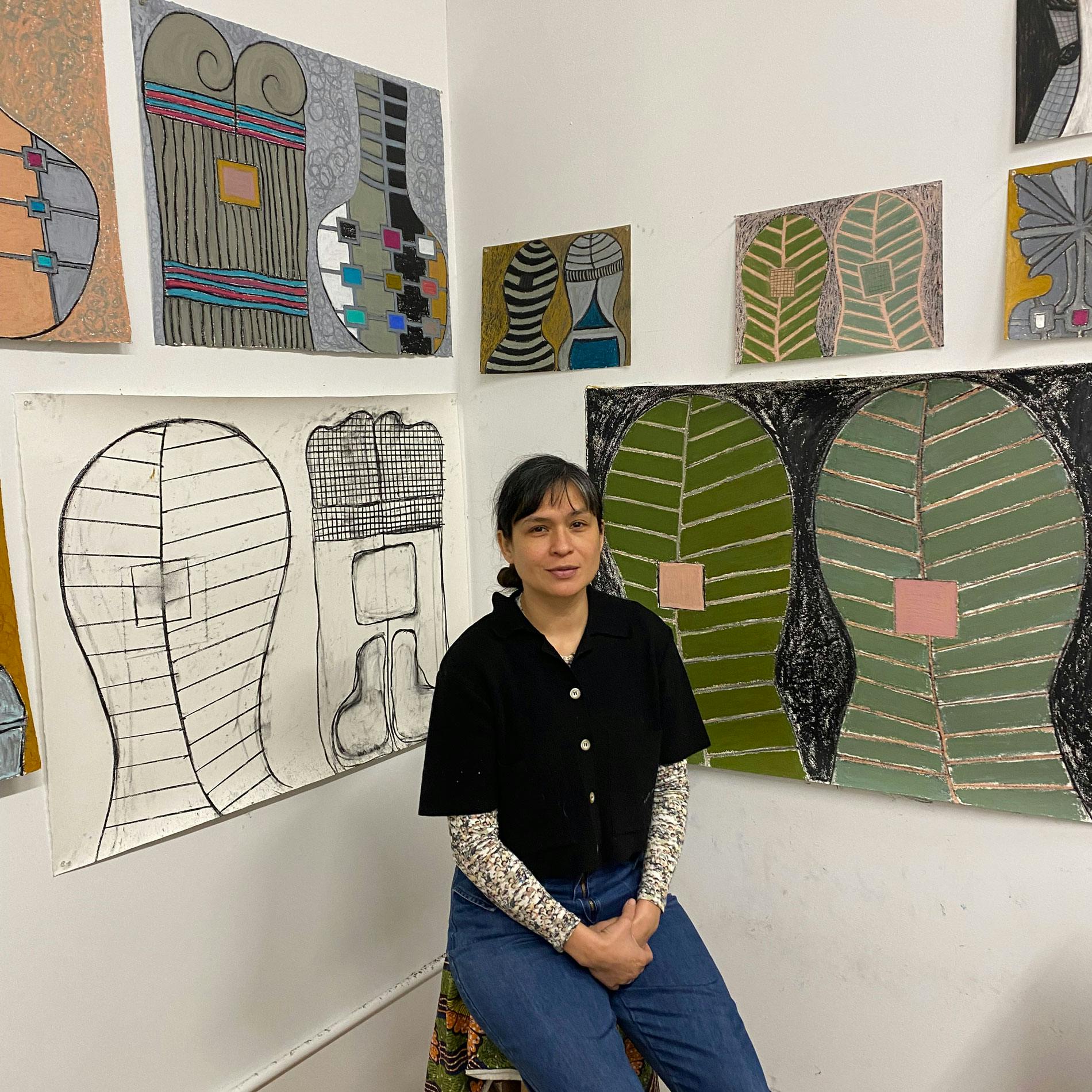
Elisa Soliven
New York-based sculptor Elisa Soliven investigates the ways in which the human form can act as a vehicle for formal and material transformations. Working primarily in clay, Soliven playfully combines the ancient process of ceramics to build heavily tactile, often abstracted contemporary portraits either pulling from memory or having friends sit for her. She then layers and manipulates the surface until a likeness becomes entirely abstracted, sometimes leaving the human form only recognizable through subtle suggestions of limbs. Looking to ancient structures and formal qualities, Soliven imbues her sculptural portraits with talismanic qualities.
Drawn to clay for its flexibility in making, ability to record touch, and level of durability, Soliven often incorporates found materials, including remnants from previous sculptures to create levels of visible history. The added irregular pieces of fired clay place the viewer in the role of an archeologist encountering elements from many time periods the deeper they peer. In all her work, Soliven looks to the frozen mark-making of ceramics as a mode of totem-making, both as symbols of connection and markers of time.
